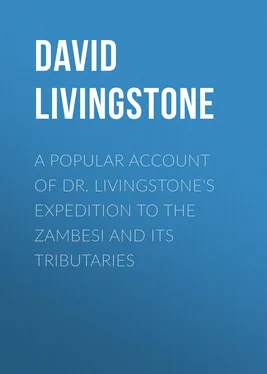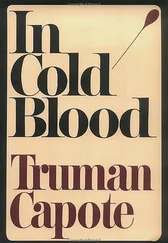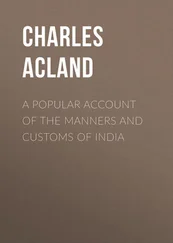David Livingstone - A Popular Account of Dr. Livingstone's Expedition to the Zambesi and Its Tributaries
Здесь есть возможность читать онлайн «David Livingstone - A Popular Account of Dr. Livingstone's Expedition to the Zambesi and Its Tributaries» — ознакомительный отрывок электронной книги совершенно бесплатно, а после прочтения отрывка купить полную версию. В некоторых случаях можно слушать аудио, скачать через торрент в формате fb2 и присутствует краткое содержание. Издательство: Иностранный паблик, Жанр: Путешествия и география, foreign_antique, foreign_prose, на английском языке. Описание произведения, (предисловие) а так же отзывы посетителей доступны на портале библиотеки ЛибКат.
- Название:A Popular Account of Dr. Livingstone's Expedition to the Zambesi and Its Tributaries
- Автор:
- Издательство:Иностранный паблик
- Жанр:
- Год:неизвестен
- ISBN:нет данных
- Рейтинг книги:4 / 5. Голосов: 1
-
Избранное:Добавить в избранное
- Отзывы:
-
Ваша оценка:
- 80
- 1
- 2
- 3
- 4
- 5
A Popular Account of Dr. Livingstone's Expedition to the Zambesi and Its Tributaries: краткое содержание, описание и аннотация
Предлагаем к чтению аннотацию, описание, краткое содержание или предисловие (зависит от того, что написал сам автор книги «A Popular Account of Dr. Livingstone's Expedition to the Zambesi and Its Tributaries»). Если вы не нашли необходимую информацию о книге — напишите в комментариях, мы постараемся отыскать её.
A Popular Account of Dr. Livingstone's Expedition to the Zambesi and Its Tributaries — читать онлайн ознакомительный отрывок
Ниже представлен текст книги, разбитый по страницам. Система сохранения места последней прочитанной страницы, позволяет с удобством читать онлайн бесплатно книгу «A Popular Account of Dr. Livingstone's Expedition to the Zambesi and Its Tributaries», без необходимости каждый раз заново искать на чём Вы остановились. Поставьте закладку, и сможете в любой момент перейти на страницу, на которой закончили чтение.
Интервал:
Закладка:
Iron ore is dug out of the hills, and its manufacture is the staple trade of the southern highlands. Each village has its smelting-house, its charcoal-burners, and blacksmiths. They make good axes, spears, needles, arrowheads, bracelets and anklets, which, considering the entire absence of machinery, are sold at surprisingly low rates; a hoe over two pounds in weight is exchanged for calico of about the value of fourpence. In villages near Lake Shirwa and elsewhere, the inhabitants enter pretty largely into the manufacture of crockery, or pottery, making by hand all sorts of cooking, water, and grain pots, which they ornament with plumbago found in the hills. Some find employment in weaving neat baskets from split bamboos, and others collect the fibre of the buazé, which grows abundantly on the hills, and make it into fish-nets. These they either use themselves, or exchange with the fishermen on the river or lakes for dried fish and salt. A great deal of native trade is carried on between the villages, by means of barter in tobacco, salt, dried fish, skins, and iron. Many of the men are intelligent-looking, with well-shaped heads, agreeable faces, and high foreheads. We soon learned to forget colour, and we frequently saw countenances resembling those of white people we had known in England, which brought back the looks of forgotten ones vividly before the mind. The men take a good deal of pride in the arrangement of their hair; the varieties of style are endless. One trains his long locks till they take the admired form of the buffalo’s horns; others prefer to let their hair hang in a thick coil down their backs, like that animal’s tail; while another wears it in twisted cords, which, stiffened by fillets of the inner bark of a tree wound spirally round each curl, radiate from the head in all directions. Some have it hanging all round the shoulders in large masses; others shave it off altogether. Many shave part of it into ornamental figures, in which the fancy of the barber crops out conspicuously. About as many dandies run to seed among the blacks as among the whites. The Man ganja adorn their bodies extravagantly, wearing rings on their fingers and thumbs, besides throatlets, bracelets, and anklets of brass, copper, or iron. But the most wonderful of ornaments, if such it may be called, is the pelélé, or upper-lip ring of the women. The middle of the upper lip of the girls is pierced close to the septum of the nose, and a small pin inserted to prevent the puncture closing up. After it has healed, the pin is taken out and a larger one is pressed into its place, and so on successively for weeks, and months, and years. The process of increasing the size of the lip goes on till its capacity becomes so great that a ring of two inches diameter can be introduced with ease. All the highland women wear the pelélé, and it is common on the Upper and Lower Shiré. The poorer classes make them of hollow or of solid bamboo, but the wealthier of ivory or tin. The tin pelélé is often made in the form of a small dish. The ivory one is not unlike a napkin-ring. No woman ever appears in public without the pelélé, except in times of mourning for the dead. It is frightfully ugly to see the upper lip projecting two inches beyond the tip of the nose. When an old wearer of a hollow bamboo ring smiles, by the action of the muscles of the cheeks, the ring and lip outside it are dragged back and thrown above the eyebrows. The nose is seen through the middle of the ring, amid the exposed teeth show how carefully they have been chipped to look like those of a cat or crocodile. The pelélé of an old lady, Chikanda Kadzé, a chieftainess, about twenty miles north of Morambala, hung down below her chin, with, of course, a piece of the upper lip around its border. The labial letters cannot be properly pronounced, but the under lip has to do its best for them, against the upper teeth and gum. Tell them it makes them ugly; they had better throw it away; they reply, “Kodi! Really! it is the fashion.” How this hideous fashion originated is an enigma. Can thick lips ever have been thought beautiful, and this mode of artificial enlargement resorted to in consequence? The constant twiddling of the pelélé with the tongue by the younger women suggested the irreverent idea that it might have been invented to give safe employment to that little member. “Why do the women wear these things?” we inquired of the old chief, Chinsunsé. Evidently surprised at such a stupid question, he replied, “For beauty, to be sure! Men have beards and whiskers; women have none; and what kind of creature would a woman be without whiskers, and without the pelélé? She would have a mouth like a man, and no beard; ha! ha! ha!” Afterwards on the Rovuma, we found men wearing the pelélé, as well as women. An idea suggested itself on seeing the effects of the slight but constant pressure exerted on the upper gum and front teeth, of which our medical brethren will judge the value. In many cases the upper front teeth, instead of the natural curve outwards, which the row presents, had been pressed so as to appear as if the line of alveoli in which they were planted had an inward curve. As this was produced by the slight pressure of the pelélé backwards, persons with too prominent teeth might by slight, but long-continued pressure, by some appliance only as elastic as the lip, have the upper gum and teeth depressed, especially in youth, more easily than is usually imagined. The pressure should be applied to the upper gum more than to the teeth.
The Manganja are not a sober people: they brew large quantities of beer, and like it well. Having no hops, or other means of checking fermentation, they are obliged to drink the whole brew in a few days, or it becomes unfit for use. Great merry-makings take place on these occasions, and drinking, drumming, and dancing continue day and night, till the beer is gone. In crossing the hills we sometimes found whole villages enjoying this kind of mirth. The veteran traveller of the party remarked, that he had not seen so much drunkenness during all the sixteen years he had spent in Africa. As we entered a village one afternoon, not a man was to be seen; but some women were drinking beer under a tree. In a few moments the native doctor, one of the innocents, “nobody’s enemy but his own,” staggered out of a hut, with his cupping-horn dangling from his neck, and began to scold us for a breach of etiquette. “Is this the way to come into a man’s village, without sending him word that you are coming?” Our men soon pacified the fuddled but good-humoured medico, who, entering his beer-cellar, called on two of them to help him to carry out a huge pot of beer, which he generously presented to us. While the “medical practitioner” was thus hospitably employed, the chief awoke in a fright, and shouted to the women to run away, or they would all be killed. The ladies laughed at the idea of their being able to run away, and remained beside the beer-pots. We selected a spot for our camp, our men cooked the dinner as usual, and we were quietly eating it, when scores of armed men, streaming with perspiration, came pouring into the village. They looked at us, then at each other, and turning to the chief upbraided him for so needlessly sending for them. “These people are peaceable; they do not hurt you; you are killed with beer:” so saying, they returned to their homes.
Native beer has a pinkish colour, and the consistency of gruel. The grain is made to vegetate, dried in the sun, pounded into meal, and gently boiled. When only a day or two old, the beer is sweet, with a slight degree of acidity, which renders it a most grateful beverage in a hot climate, or when fever begets a sore craving for acid drinks. A single draught of it satisfies this craving at once. Only by deep and long-continued potations can intoxication be produced: the grain being in a minutely divided state, it is a good way of consuming it, and the decoction is very nutritious. At Tette a measure of beer is exchanged for an equal-sized pot full of grain. A present of this beer, so refreshing to our dark comrades, was brought to us in nearly every village. Beer-drinking does not appear to produce any disease, or to shorten life on the hills. Never before did we see so many old, grey-headed men and women; leaning on their staves they came with the others to see the white men. The aged chief, Muata Manga, could hardly have been less than ninety years of age; his venerable appearance struck the Makololo. “He is an old man,” said they, “a very old man; his skin hangs in wrinkles, just like that on elephants’ hips.” “Did you never,” he was asked, “have a fit of travelling come over you; a desire to see other lands and people?” No, he had never felt that, and had never been far from home in his life. For long life they are not indebted to frequent ablutions. An old man told us that he remembered to have washed once in his life, but it was so long since that he had forgotten how it felt. “Why do you wash?” asked Chinsunsé’s women of the Makololo; “our men never do.”
Читать дальшеИнтервал:
Закладка:
Похожие книги на «A Popular Account of Dr. Livingstone's Expedition to the Zambesi and Its Tributaries»
Представляем Вашему вниманию похожие книги на «A Popular Account of Dr. Livingstone's Expedition to the Zambesi and Its Tributaries» списком для выбора. Мы отобрали схожую по названию и смыслу литературу в надежде предоставить читателям больше вариантов отыскать новые, интересные, ещё непрочитанные произведения.
Обсуждение, отзывы о книге «A Popular Account of Dr. Livingstone's Expedition to the Zambesi and Its Tributaries» и просто собственные мнения читателей. Оставьте ваши комментарии, напишите, что Вы думаете о произведении, его смысле или главных героях. Укажите что конкретно понравилось, а что нет, и почему Вы так считаете.












![Edward Ellis - Adrift on the Pacific - A Boys [sic] Story of the Sea and its Perils](/books/753342/edward-ellis-adrift-on-the-pacific-a-boys-sic-s-thumb.webp)